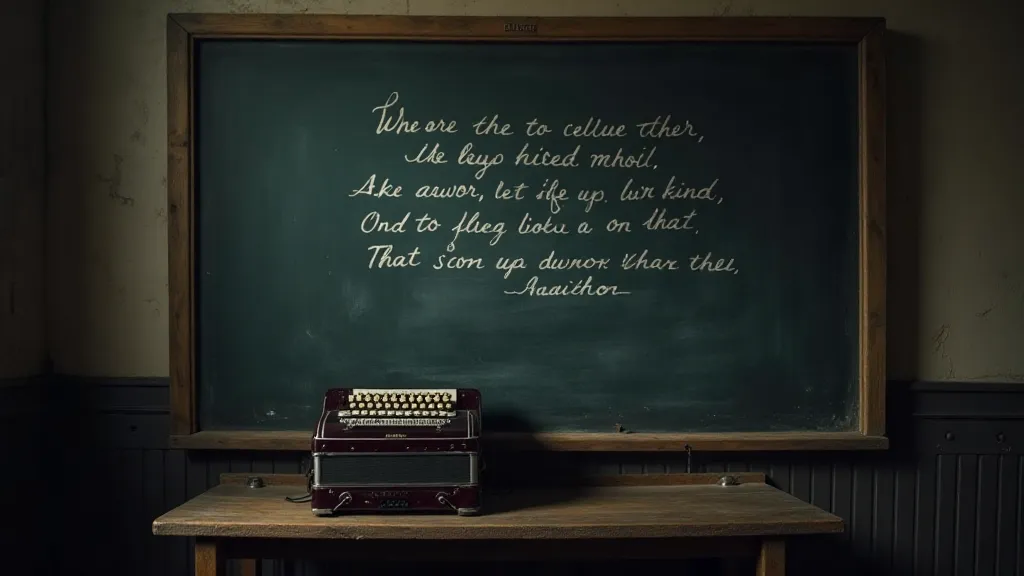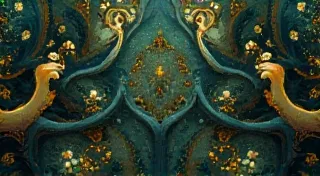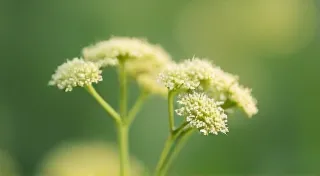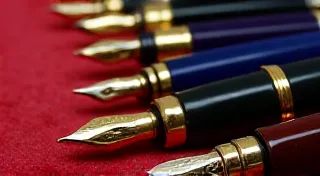The Silent Sermon: Designing Chalkboard Art for Introspective Messaging
There's a particular stillness you find in antique spaces – the quiet hum of history clinging to aged wood, the faint scent of forgotten stories. I often find myself drawn to these spaces, particularly when I'm seeking inspiration for my chalkboard art. For me, it’s not just about drawing pretty pictures; it’s about creating a visual echo, a silent sermon delivered in dust and pigment. It's a feeling I first understood while restoring an antique accordion, a process that revealed layers of craftsmanship and history, and subtly informed my approach to chalkboard design.
The accordion itself, a Hohner Model A from the 1920s, was a heartbreaking mess when I found it. Keys were missing, bellows were cracked, and the leather had dried to a brittle, crumbling state. Disassembling it felt like uncovering a secret language, a complex system of levers, reeds, and meticulously folded paper. Each component spoke of the maker's dedication; the tiny, perfectly aligned rivets, the hand-stamped markings on the reeds. It was more than an instrument; it was a testament to the human desire to create beauty and connect with others through music. Bringing it back to life was a slow, deliberate process, requiring not only technical skill but also a deep respect for its history. I realized that chalkboard art, at its best, could evoke a similar feeling of reverence and quiet contemplation.
The connection seems unusual, perhaps, but the core principles are surprisingly aligned. Both require a respect for materials, an understanding of structure, and a dedication to creating something that resonates on an emotional level. The accordion's bellows, expanding and contracting with a rhythmic sigh, mirrored the ebb and flow of thought and emotion I hoped to capture in my chalkboard designs.
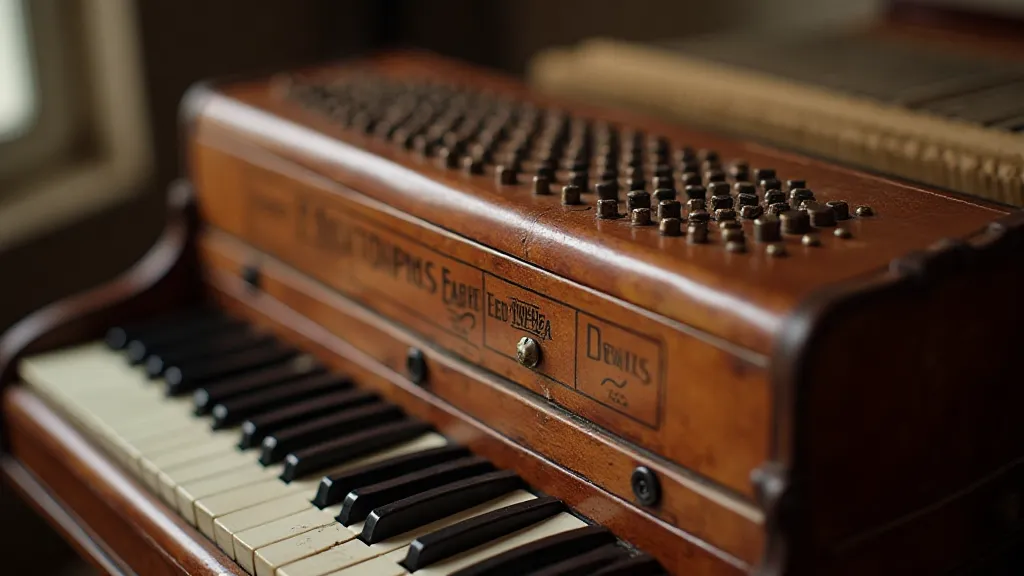
The Power of Subtlety: Chalkboard Art for Reflection
Most chalkboard art you see is celebratory – welcome signs, menu boards, promotional messages. These are important and have their place, but I’m interested in something deeper. I want to create chalkboard art that pauses the viewer, that invites them to consider something beyond the surface. This isn’t about being cryptic or obscure; it's about layering meaning and encouraging introspection.
The key lies in mindful composition. Think about how you arrange elements on the board. Avoid symmetry if you want to create a sense of unease or dynamism. Use negative space to draw attention to specific areas and to create a feeling of openness or solitude. Consider the flow of the eye – where do you want the viewer to look first, and then where do you want them to be led?
Color plays a vital role, too. While vibrant colors can be eye-catching, muted tones – soft grays, dusty blues, warm browns – tend to create a more contemplative atmosphere. Consider using a single, dominant color and then layering subtle variations to add depth and visual interest. Don't be afraid to leave areas of the board unchalked – the bare wood itself can be a powerful visual element.
The Language of Symbolism
Symbolism is a powerful tool for evoking emotion and prompting reflection. However, it’s crucial to use symbols with intention and avoid clichés. A wilting flower, for example, can represent loss or the passage of time, but it can also be interpreted as resilience or the beauty of decay. The interpretation, ultimately, is up to the viewer.
Think about the symbolism of natural elements – mountains representing strength and endurance, rivers representing the flow of life, trees representing interconnectedness. Consider the symbolism of animals – owls representing wisdom, wolves representing instinct, birds representing freedom. The challenge is to use these symbols in a way that is both meaningful and open to interpretation.
Think about the aging process. In the accordion restoration, I was careful not to erase all the signs of wear and tear. The scratches, the faded markings, the subtle imperfections, these were all part of the accordion’s story. They spoke of its history, its journey through time. In chalkboard art, you can achieve a similar effect by allowing some of the underlying wood texture to show through or by incorporating deliberate “imperfections” into your design.
The Art of Chalk Lettering: A Deliberate Hand
Chalk lettering is, of course, fundamental to chalkboard art. While bold, blocky lettering is effective for conveying clear messages, more delicate, expressive lettering can add a layer of nuance and sophistication. Experiment with different lettering styles – calligraphy, brush lettering, even hand-lettered typography – to find a style that resonates with your artistic vision.
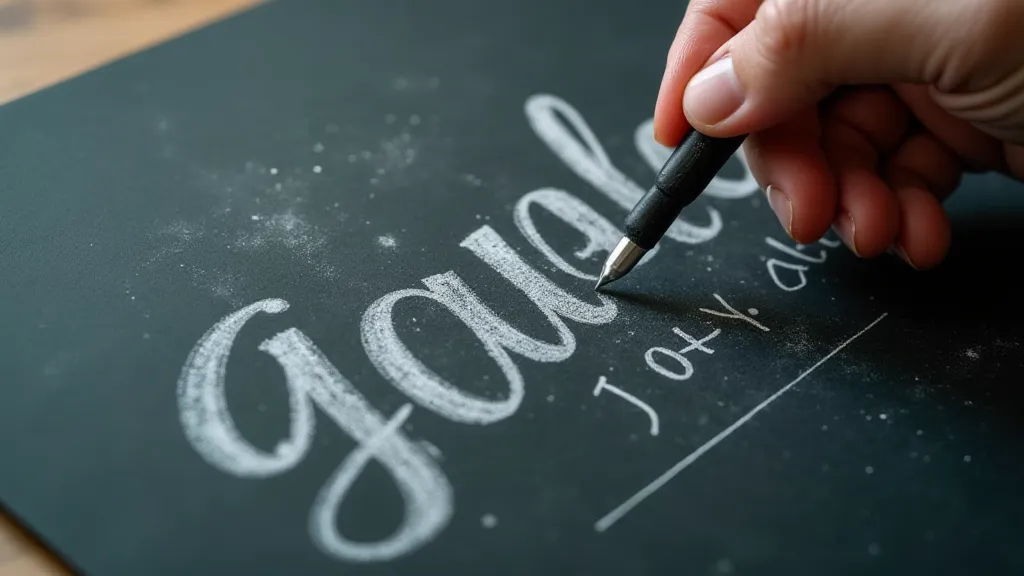
Consider the spacing between letters and words – too tight, and the lettering will feel cramped; too loose, and it will feel disjointed. Pay attention to the slant of the lettering – a slight slant can create a sense of movement or energy. Practice regularly to develop your skills and to find your own unique style. There's a meditative quality to the process itself; the slow, deliberate strokes of chalk across the board can be incredibly calming.
Finding Inspiration: The Echoes of the Past
My inspiration often comes from unexpected places – from old photographs, from antique books, from the quiet moments of observation. I find myself drawn to images that evoke a sense of longing, of nostalgia, of quiet contemplation. The accordion, a symbol of a bygone era, often surfaces in my thoughts as I plan new designs.
Look beyond the obvious. A single word, a fragment of a sentence, a fleeting image – these can be powerful starting points for a chalkboard design. Don’t be afraid to experiment, to break the rules, to find your own unique voice. The most compelling chalkboard art is often the art that comes from the heart.
Restoration, like artistic creation, is a process of revealing. The best chalkboard art, in my opinion, isn's about building something entirely new, but rather uncovering something already present, allowing it to speak through the dust and pigment. It's about creating a silent sermon, a visual poem that lingers in the mind long after the viewer has moved on. It's about connecting with something deeper, something timeless.
